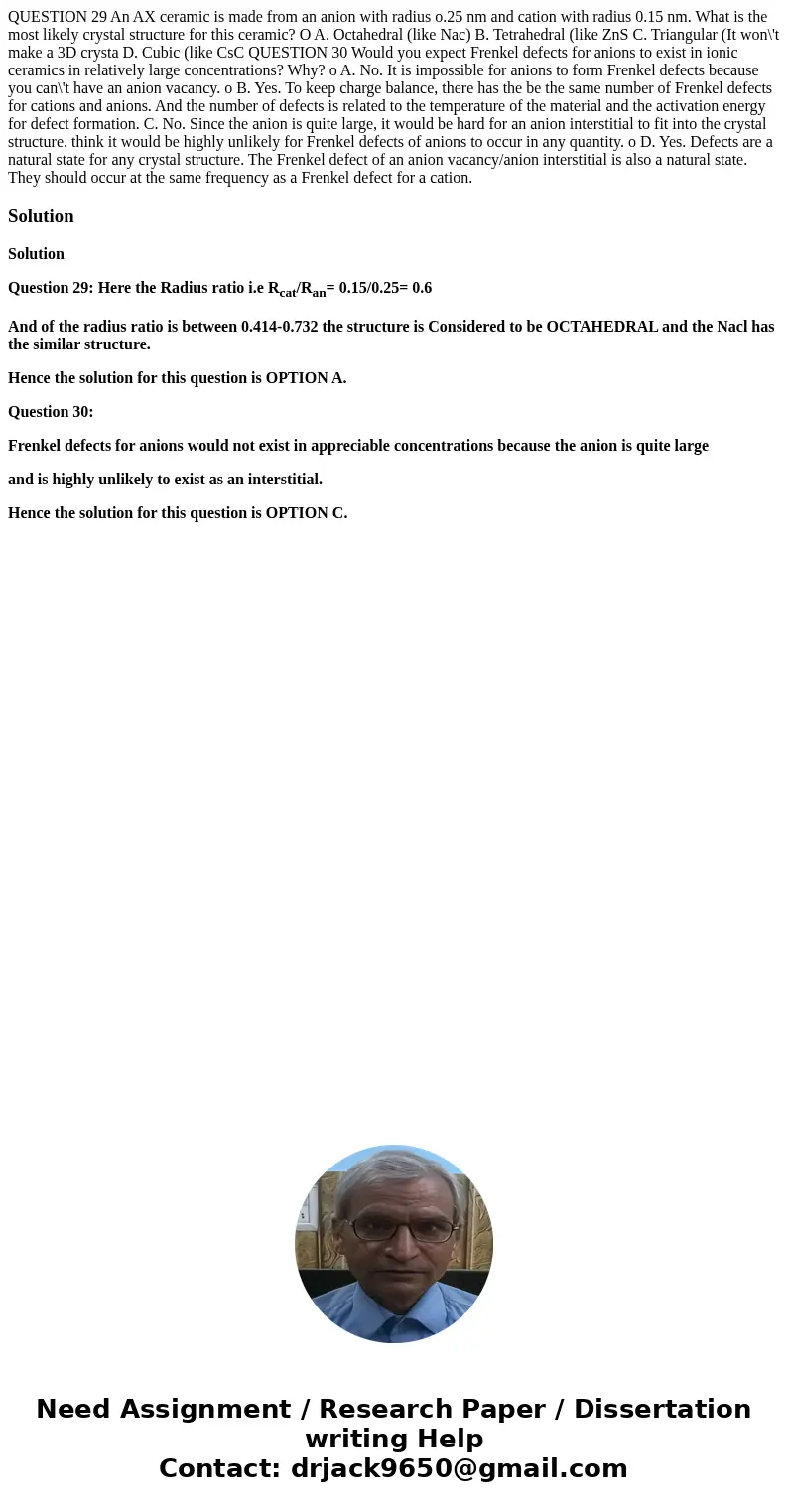QUESTION 29 An AX ceramic is made from an anion with radius
QUESTION 29 An AX ceramic is made from an anion with radius o.25 nm and cation with radius 0.15 nm. What is the most likely crystal structure for this ceramic? O A. Octahedral (like Nac) B. Tetrahedral (like ZnS C. Triangular (It won\'t make a 3D crysta D. Cubic (like CsC QUESTION 30 Would you expect Frenkel defects for anions to exist in ionic ceramics in relatively large concentrations? Why? o A. No. It is impossible for anions to form Frenkel defects because you can\'t have an anion vacancy. o B. Yes. To keep charge balance, there has the be the same number of Frenkel defects for cations and anions. And the number of defects is related to the temperature of the material and the activation energy for defect formation. C. No. Since the anion is quite large, it would be hard for an anion interstitial to fit into the crystal structure. think it would be highly unlikely for Frenkel defects of anions to occur in any quantity. o D. Yes. Defects are a natural state for any crystal structure. The Frenkel defect of an anion vacancy/anion interstitial is also a natural state. They should occur at the same frequency as a Frenkel defect for a cation. 
Solution
Solution
Question 29: Here the Radius ratio i.e Rcat/Ran= 0.15/0.25= 0.6
And of the radius ratio is between 0.414-0.732 the structure is Considered to be OCTAHEDRAL and the Nacl has the similar structure.
Hence the solution for this question is OPTION A.
Question 30:
Frenkel defects for anions would not exist in appreciable concentrations because the anion is quite large
and is highly unlikely to exist as an interstitial.
Hence the solution for this question is OPTION C.

 Homework Sourse
Homework Sourse